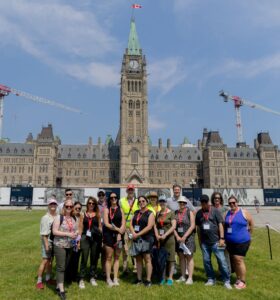Parachute and the Canadian Association of Road Safety Professionals (CARSP), along with staff from the City of Ottawa, organized a Vision Zero Walkshop that took place on June 18, 2024.
The event, attended by 40 delegates from the 2024 CARSP Conference held in Ottawa, kicked off at the Delta Hotels Ottawa City Centre with a welcome from Valerie Smith, Parachute’s Director of Road Safety Programs who also served as CARSP President.

The walkshop route

No. 1 – Ariel Troster, Ottawa City Councillor (Somerset Ward 13)
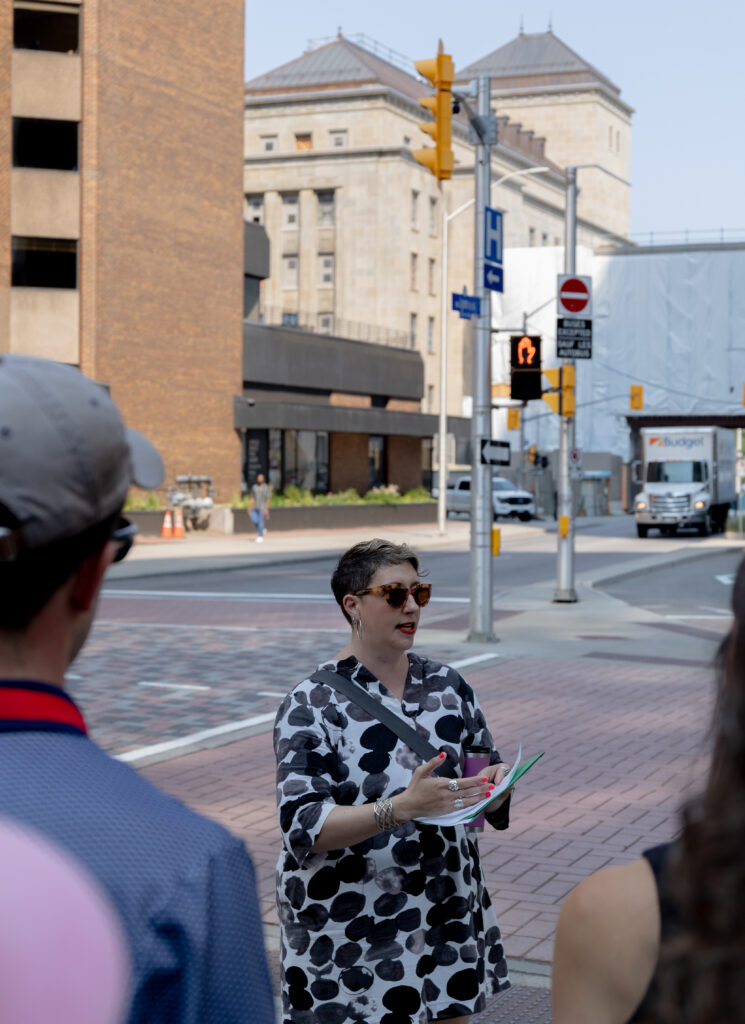
Local City Councillor Ariel Troster talked about Ottawa’s evolving cycling infrastructure and where the city wants to implement further improvements. Troster, whose downtown ward is the smallest and most densely populated in Ottawa, pointed out there are many challenges still to provide safe mobility for all road users: for instance, some streets are designated as being both a cycling route and a trucking route.
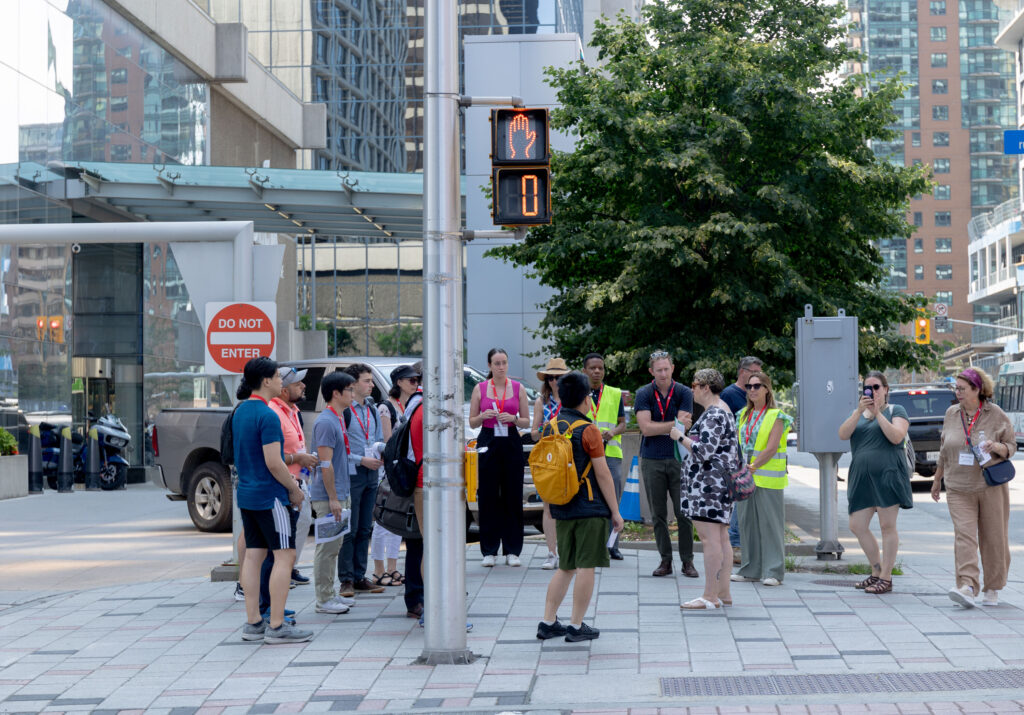
No. 2 – Emmett Proulx, Project Manager, Cycling and Walking Programs, City of Ottawa
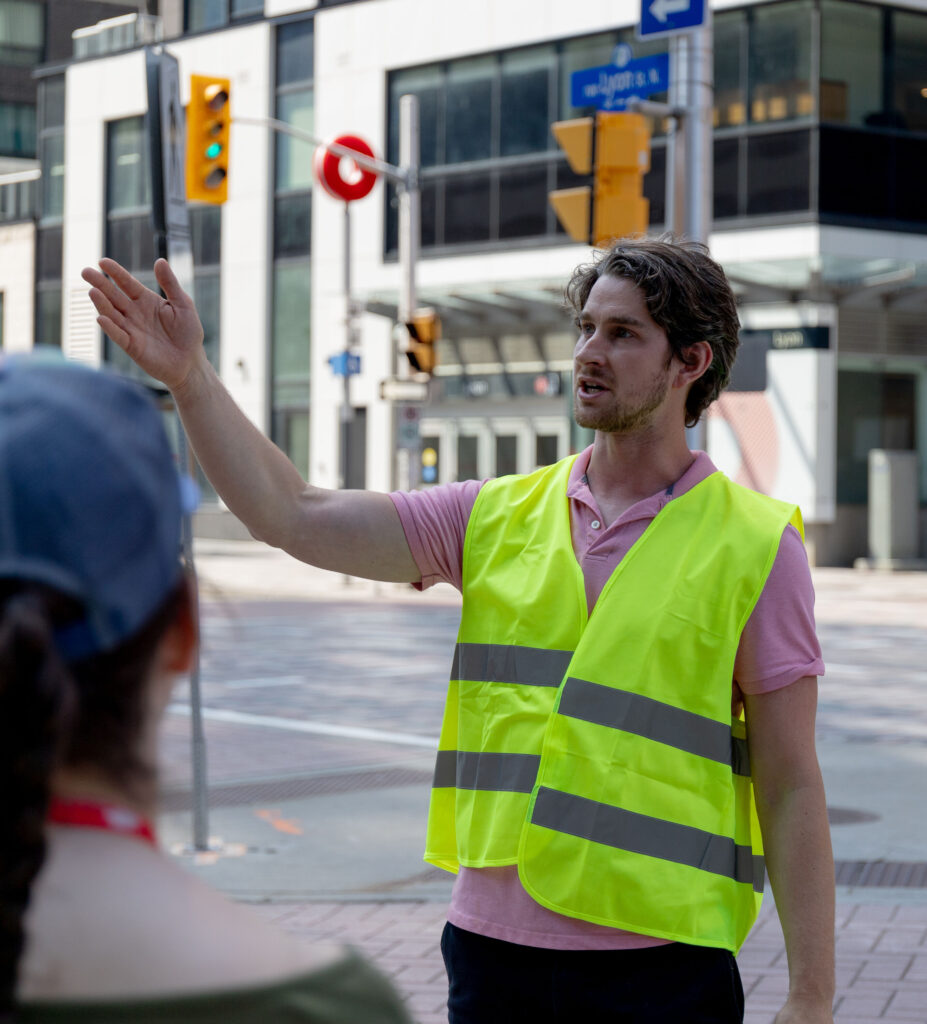
Participants walked from the intersection of Lyon and Queen streets to the intersection of Lyon and Spark streets to learn about Ottawa’s redesigned and updated intersections in the downtown core area that are designed to encourage and promote safe mobility for all road users.
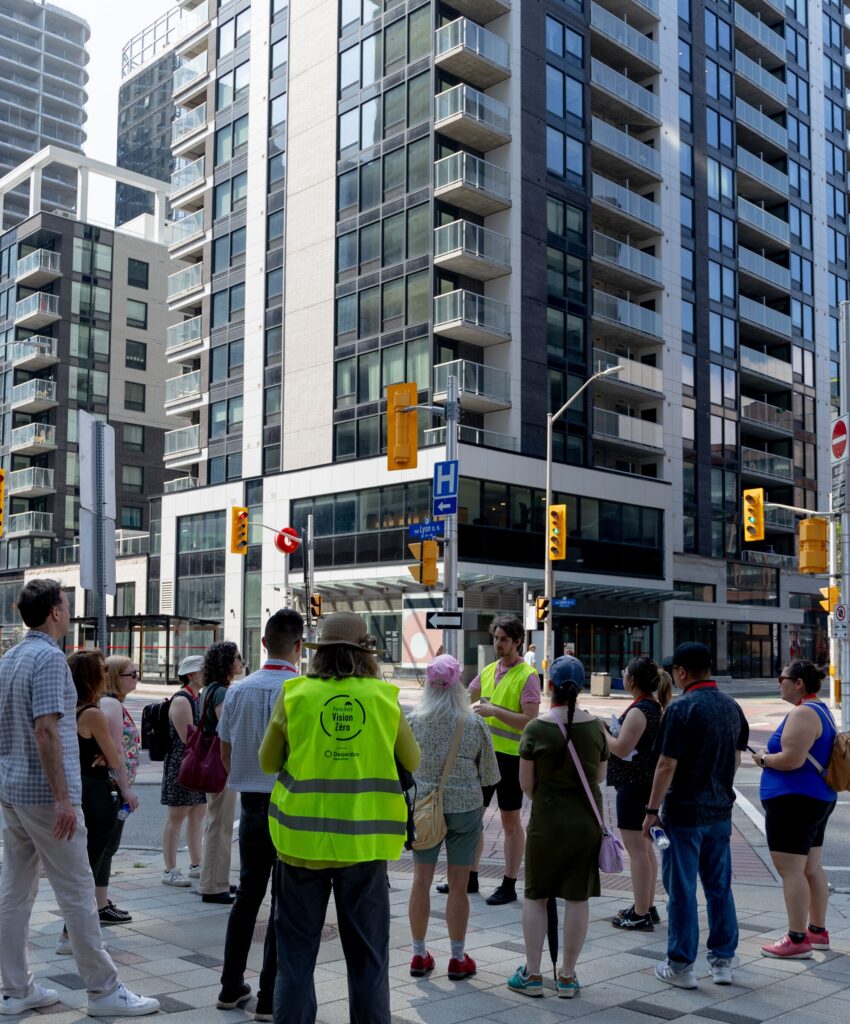
No. 3 – Kevin McHale, Executive Director, Spark Street Business Improvement Area
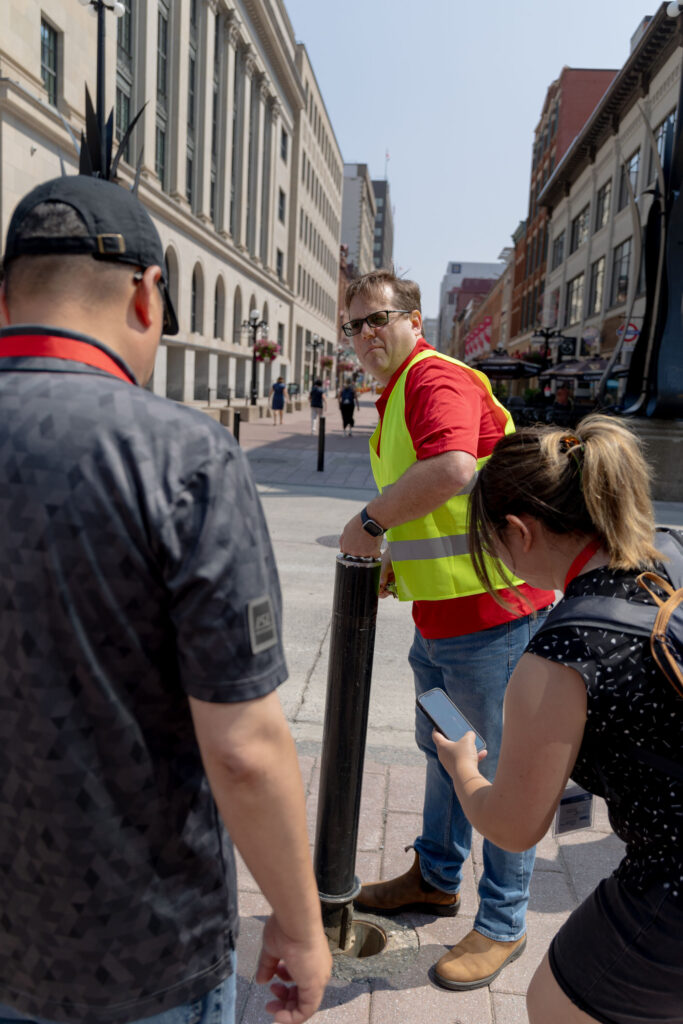
This section of the tour went from intersection of Lyon and Spark streets to the intersection of Spark and Metcalfe streets to learn about Ottawa’s only pedestrian mall. Spark Street is one of Ottawa’s more historic streets with a number of heritage buildings. McHale also spoke about how many levels of governance – the municipality, the National Capital Commission and the federal government – have a say in street infrastructure in Ottawa, particularly in this neighbourhood filled with federally owned buildings. This can complicate moving projects forward.
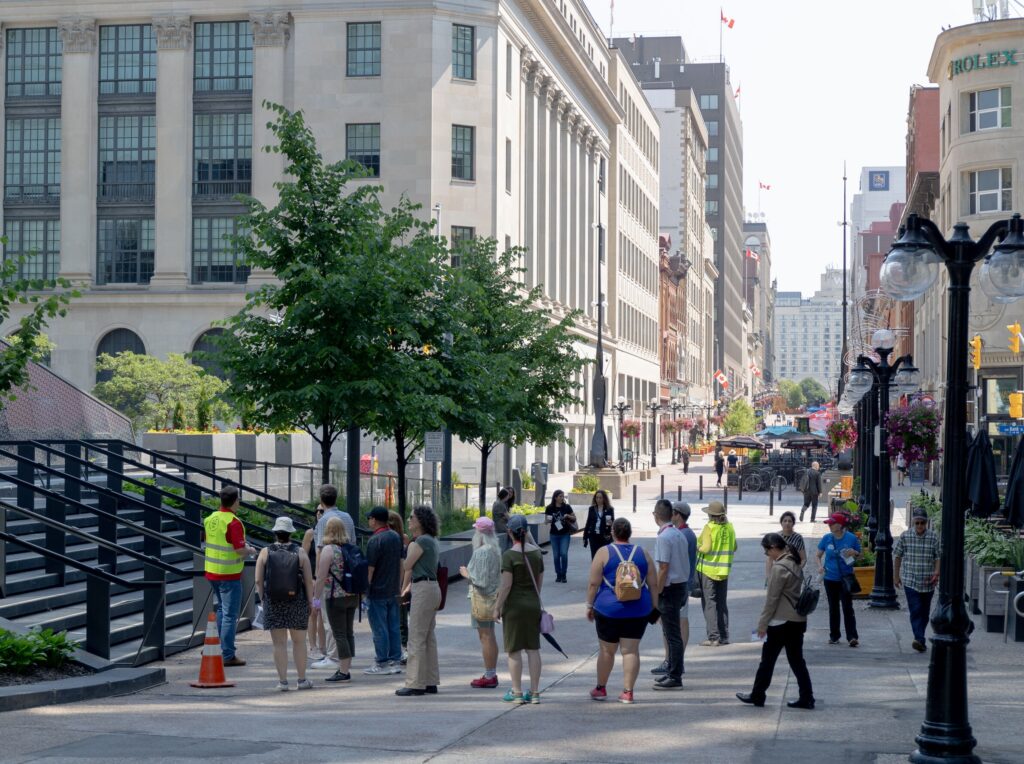
No. 4 – Hans Moor, Cycling advocate
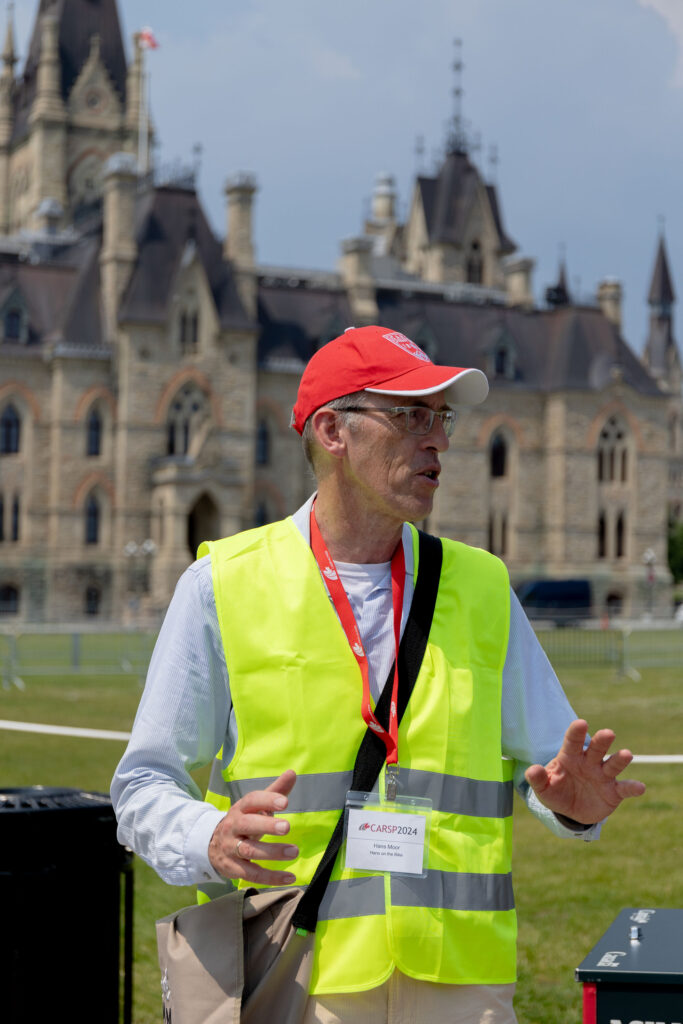
The tour continued to the intersection of Metcalfe and Wellington streets, where the group walked along Wellington, passing landmarks on the route including Parliament Hill, Supreme Court of Justice and the Indigenous People’s Space. Moor discussed plans for bidirectional bike lanes and pedestrian infrastructure along the route, and pointed out temporary measures recently put in place to allow safer travel along this busy roadway for cyclists and pedestrians.
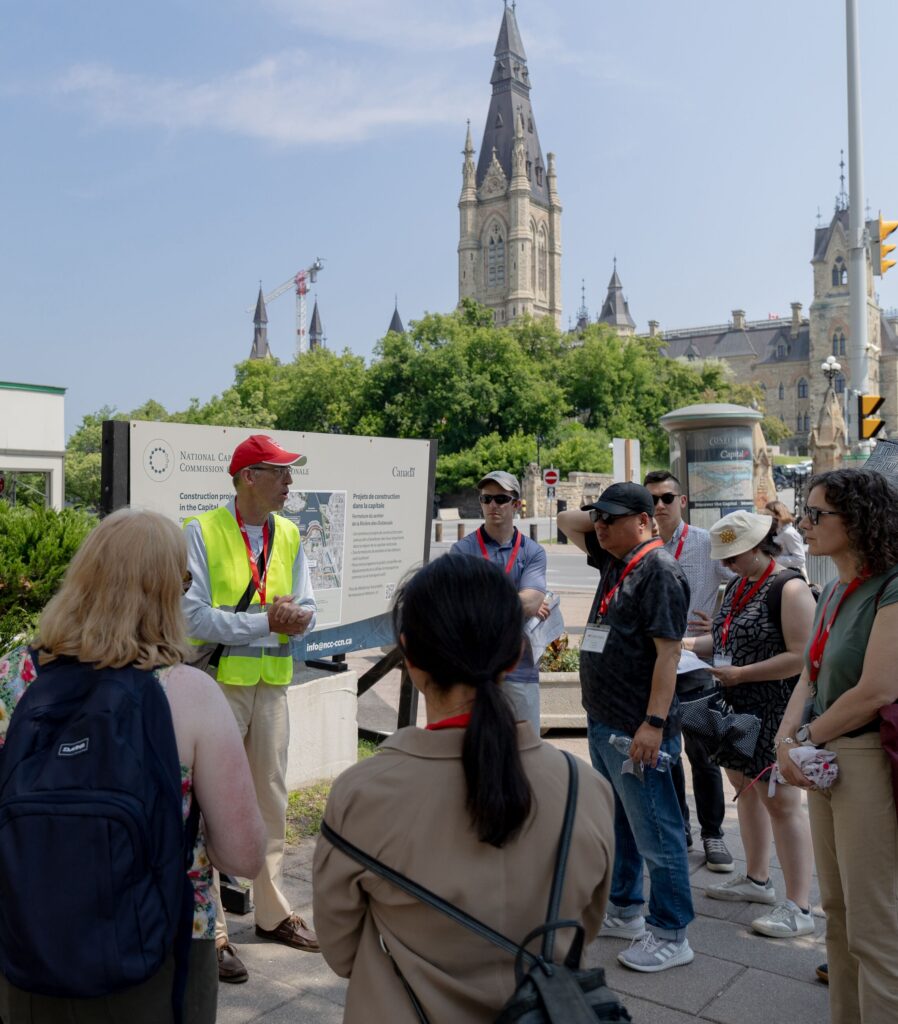
Participant feedback
In a post-event survey, 100 per cent of participants agreed that they would attend this type of event again, and that they would recommend others attend a walkshop, as well. All ranked the walkshop either “engaging” or “very engaging”.
All surveyed agreed they had learned new information and that it was valuable to hear from a variety of speakers to learn about what is being done to improve safe mobility in Ottawa.
Other feedback from survey comments:
- So interesting to hear from people who know the territory so well and can point out both the improvements made, the ones planned, and where things have not yet worked out. Very well-rounded presentations: I had been afraid it would be all cheerleader-y but it was a great, honest look at the neighbourhood and its challenges.
- It was good to hear how an active councillor, bike activist and other city staff came together and used the reopening of Wellington Street as opportunity to put some bike lanes in.
- I didn’t realize how complex things are in Ottawa with all the various levels of government and organizations all having their say in how roads are used, and the added layer of security issues competing with road use.
- Some vehicles/construction trucks were blocking the walkways during the walkshop so we had a first-hand experience of mobility issues.
- I learned that good interim measures can last years, especially if the final or last stage is a few years out.
